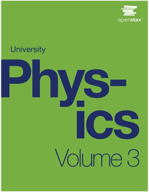?Wave-Particle DualityTreat the human body as a blackbody and determine the percentage
Chapter 6, Problem 124(choose chapter or problem)
Wave-Particle Duality
Treat the human body as a blackbody and determine the percentage increase in the total power of its radiation when its temperature increases from \(98.6^{\circ} \mathrm{F} \text { to } 103^{\circ} \mathrm{F}\).
Text Transcription:
98.6 degree F to 103 degrees F
Unfortunately, we don't have that question answered yet. But you can get it answered in just 5 hours by Logging in or Becoming a subscriber.
Becoming a subscriber
Or look for another answer
